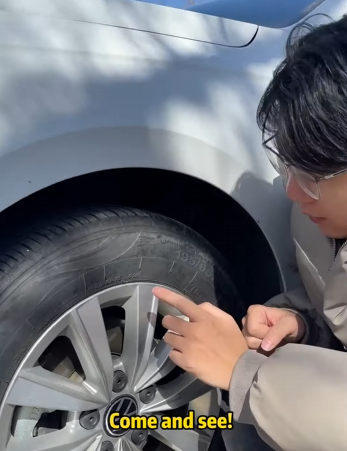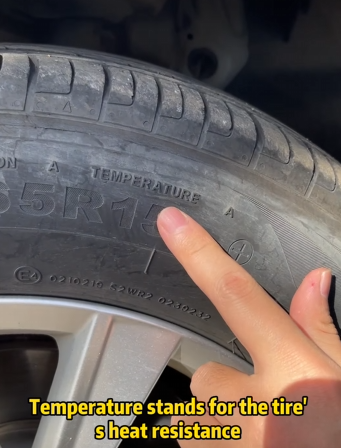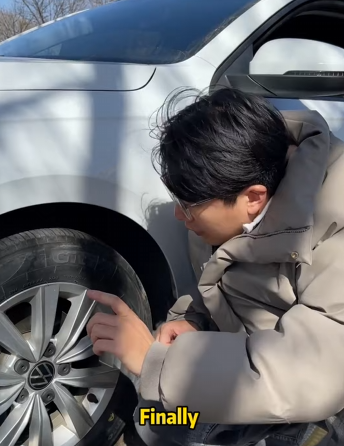
When it comes to car maintenance and safety, most people focus on the engine, brakes, or even the fuel efficiency of their vehicle. However, one of the most critical yet often overlooked components of a car is its tires. Every car tire is packed with essential information that can reveal important details about its performance, safety, and suitability for different driving conditions. Understanding the hidden information on your car tires can help you make informed decisions, improve your driving experience, and ensure your safety on the road.

Understanding Tire Sidewall Markings
One of the most important places where valuable information is stored on a tire is the sidewall. This area contains a series of letters, numbers, and symbols that indicate various characteristics of the tire. Here’s what they mean:
1. Tire Size
Every tire has a specific size printed on its sidewall, usually written in a format like P215/65R16. Let’s break down this example:
- P: This stands for “Passenger Vehicle.” If you see “LT,” it means the tire is for a Light Truck.
- 215: This is the width of the tire in millimeters.
- 65: This is the aspect ratio, which represents the height of the sidewall as a percentage of the tire’s width. In this case, the sidewall height is 65% of 215mm.
- R: This means “Radial” construction, which is the most common type.
- 16: This represents the diameter of the wheel in inches.
2. Load Index and Speed Rating
Next to the tire size, you’ll find a number and a letter, such as 95H:
- 95: This is the load index, which tells you the maximum weight the tire can support. A load index of 95 means the tire can handle up to 1,521 lbs (690 kg).
- H: This is the speed rating, which indicates the maximum speed the tire can safely sustain. The letter “H” means the tire is rated for speeds up to 130 mph (210 km/h).
Understanding the load index and speed rating ensures that you choose the right tires for your driving needs. Using tires with the wrong rating can affect performance and safety.
3. DOT Code (Department of Transportation Number)
Every tire has a DOT code, such as DOT XYZ 3822. The last four digits (3822) are particularly important:
- The first two digits (38) indicate the week the tire was manufactured.
- The last two digits (22) indicate the year of manufacture.
In this example, the tire was made in the 38th week of 2022. This information is crucial because tires degrade over time, even if they are not used frequently. Experts recommend replacing tires that are over six years old, regardless of tread wear.
4. Treadwear, Traction, and Temperature Ratings
Another useful marking is the Uniform Tire Quality Grading (UTQG) system, which includes:
- Treadwear: A number like 300, 400, or 500, which indicates how long the tread is expected to last compared to a standard reference tire. A higher number means longer-lasting tread.
- Traction: A rating of AA, A, B, or C that measures the tire’s ability to stop on wet pavement. “AA” is the highest rating.
- Temperature: A rating of A, B, or C that indicates the tire’s resistance to heat buildup. “A” is the best rating for high-speed performance.

Hidden Safety Features in Tires
Tires come with built-in safety indicators that most drivers don’t notice. These include:
1. Tread Wear Indicators (TWI)
Tires have small raised bars within the tread grooves known as Tread Wear Indicators (TWI). When the tread wears down to the same level as these bars, it’s time to replace the tires. Driving on worn-out tires reduces traction, especially in wet conditions, increasing the risk of accidents.
2. Maximum Inflation Pressure
While tires display a maximum inflation pressure, this is NOT the recommended pressure for everyday use. Instead, check your vehicle’s manual or the sticker inside the driver’s door for the correct inflation level. Over- or under-inflated tires affect fuel efficiency, handling, and safety.
3. Run-Flat Technology
Some modern tires feature run-flat technology, allowing you to continue driving for a short distance even after a puncture. This gives you time to find a repair shop without changing the tire on the roadside.
Environmental and Seasonal Considerations
The type of tire you choose depends on your location and driving conditions.
1. All-Season vs. Winter Tires
- All-Season Tires: Designed to perform well in a variety of conditions but may not provide the best traction in extreme cold or heavy snow.
- Winter Tires: Made from softer rubber compounds and designed with deep grooves for superior traction on ice and snow. These are marked with a snowflake symbol.
2. Summer vs. Performance Tires
- Summer Tires: Provide better grip and handling in warm weather but become hard and lose traction in cold temperatures.
- Performance Tires: Designed for high-speed stability and cornering but may wear out faster than standard tires.

How to Read Tire Expiry and Replacement Signs
Besides checking the DOT code, here are other signs that indicate it’s time to replace your tires:
- Cracks on the Sidewall: Indicates aging rubber, which can lead to blowouts.
- Bulges or Blisters: Weak spots that can cause a sudden tire failure.
- Uneven Wear Patterns: Often caused by misalignment, improper inflation, or suspension issues.
- Vibration While Driving: May indicate internal tire damage or balance issues.
Final Thoughts: Why This Information Matters
Understanding the hidden information in car tires helps you:
- Choose the right tires for your vehicle and driving conditions.
- Ensure safety by checking tire age and wear.
- Improve fuel efficiency by maintaining proper inflation.
- Save money by preventing premature wear and blowouts.
Your tires are the only part of your car that touches the road, so knowing how to read their hidden information can significantly improve your driving experience and safety. The next time you look at your tires, take a moment to decode the markings—they reveal more than you might think!



